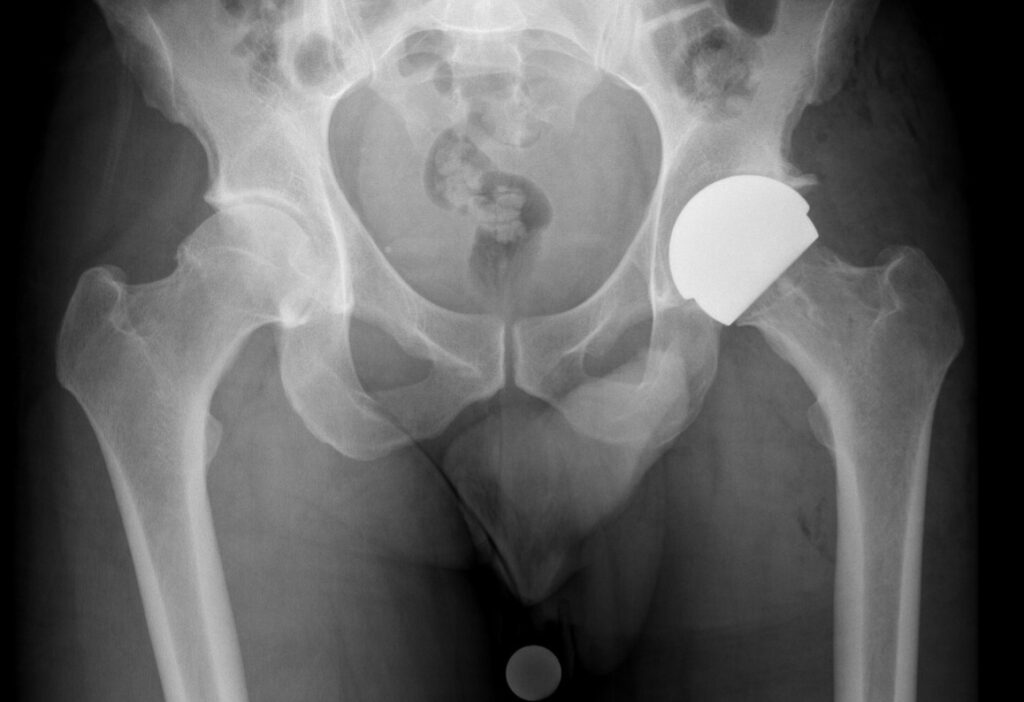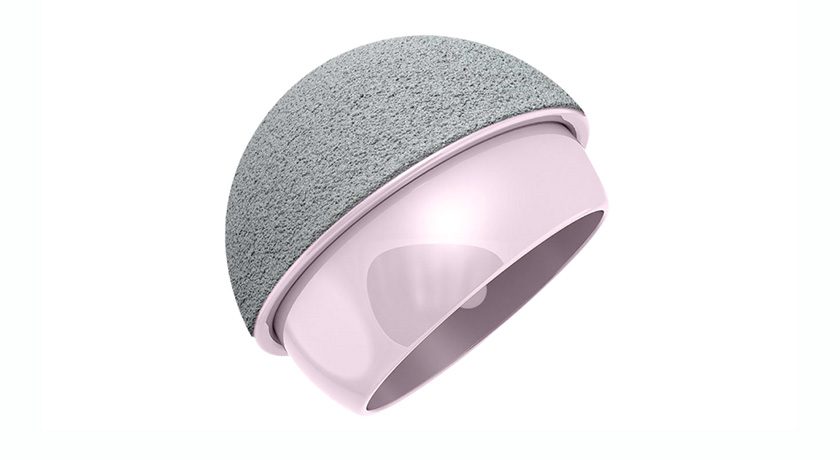An active solution for younger patients with arthritis of the hip.
Overview
Hip resurfacing is an alternative to total hip replacement for younger, active patients with good bone quality. Rather than removing the entire ball of the femur, the femoral head is shaped and capped with a smooth metal surface, and the socket is replaced with a metal cup. This preserves more of your natural bone and allows for a larger, more stable bearing.
Hip resurfacing may offer excellent outcomes in the right patient — especially those who want to maintain a high level of activity and reduce the risk of dislocation.
Example of Hip Resurfacing

X-ray showing a ceramic-on-ceramic hip resurfacing implant in place, preserving the femoral head and neck
Indications
Hip resurfacing is an alternative treatment option for hip arthritis to total hip replacement, however resurfacing is typically considered for:
-
Younger adults under 60 with strong bone quality
-
Patients with hip osteoarthritis who still wish to engage in high levels of physical activity
-
Individuals who may need future revision surgery and want to preserve bone for later procedures
-
Those seeking greater range of motion and less risk of dislocation compared to a conventional hip replacement

Ceramic components are now standard for hip resurfacing, mitigating many of the historical risks associated with "metal on metal" hip resurfacings
Surgical Approach
Hip resurfacings have traditionally been performed through the posterior approach for technical ease, however my preferred approach for hip resurfacing is the minimally invasive anterior approach. This method accesses the hip joint through a natural interval between muscles at the front of the hip.
Key advantages of this approach include:
-
Less disruption to muscles and soft tissues
-
Lower post-operative pain
-
Faster mobilisation and shorter hospital stay
-
Reduced risk of hip dislocation
-
Smaller scar and improved cosmetic outcome
Lower infection risk
Each patient is different — during your consultation, I will assess whether this approach is appropriate for your anatomy, medical history, and goals. In all cases, the aim is a precise, durable result using proven implant technology.
Advantages of Hip Resurfacing over Total Hip Replacement
Whilst a total hip replacement is a very satisfactory and reliable operation, there are benefits of hip resurfacing:
More femoral bone is retained
The femoral component loads the femur in a more biological way, allowing for a more normal walking pattern and the ability to return to high level impact activity
The bearing size is large, allowing for improved stability
Revision, where required, is typically more simple than that of a total hip replacement
Risks
While the vast majority of patients do well, hip resurfacing carries its own unique risks:
These include:
-
Squeaking – as the resurfacing bearing surface is ceramic-on-ceramic, a small percentage of patients experience a squeak in the hip with specific movements
-
Femoral neck fracture – may occur after surgery if bone quality is inadequate
-
Implant loosening – rare, but revision to a total hip replacement may be necessary
-
Not suitable for all anatomies – a leg length discrepency, rotational malalignment, dysplasia or abnormally shaped bones may preclude a hip resurfacing
We will go through your personal risk profile and ensure that every step is taken to minimise complications and maximise success.
Recovery Timeline
Recovery varies due to specific patient anatomy. With normal anatomy, the recovery follows that of a total hip replacement. However if there is excessive bone in the femoral neck region that needs to be removed to allow for improved motion, weight bearing restrictions may be required in the early post-operative period.
Typical Recovery
-
Hospital stay: 1–3 days
-
Walking with a frame or crutches: first 2-6 weeks
-
Transition to walking unaided: 2-6 weeks
-
Return to driving: usually by 2-4 weeks
-
Back to office work or light duties: between 2-8 weeks
-
Full recovery and return to sport: 6-12 months
With proper rehabilitation, patients often return to a highly active lifestyle.
Frequently Asked Questions
What’s the main difference between hip resurfacing and total hip replacement?
Hip resurfacing preserves more of your natural bone, especially the femoral head. This can allow for better joint mechanics in younger, active patients.
Who is the ideal candidate for hip resurfacing?
Typically, adults under 60 with normal anatomy, equal leg lengths, good bone stock, and a high activity level.
Are there concerns with the material of the bearing surfaces?
Historically, hip resurfacings have been made with metal components that would erode bone and travel into the blood stream. Dr Robinson uses a modern hip resurfacing prosthesis which is made of ceramic, so metal ions are not an issue.
Is dislocation less likely after hip resurfacing?
Yes. The larger bearing size makes dislocation significantly less common compared to conventional total hip replacement. Hip precautions are not required after hip resurfacing, particularly with the anterior approach.
Can it be revised in the future?
Yes. If required, a resurfacing can be converted to a full total hip replacement later. Preserving bone makes future revision more straightforward.
Will I be able to return to sport?
Most patients can return to cycling, swimming, hiking, and other low- or even high-impact activities with time and rehabilitation.
When can I return to work?
This depends on your job.
-
Desk-based work: ~2–4 weeks
-
Light manual work: ~8-10 weeks
-
Heavy or physically demanding roles: 10–12+ weeks, depending on recovery progress
Ready to Learn More?
If hip pain is holding you back, I’d be happy to meet with you to assess your symptoms, review your imaging, and discuss whether a hip resurfacing is the right solution. Together, we’ll tailor a plan that suits your lifestyle, goals, and long-term joint health.
